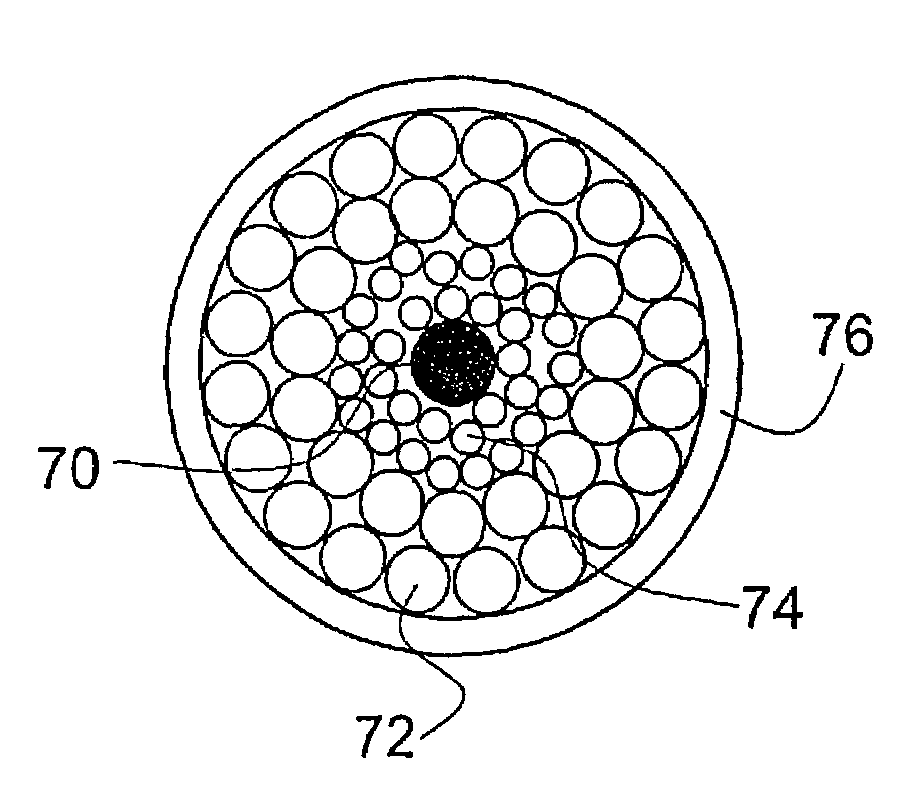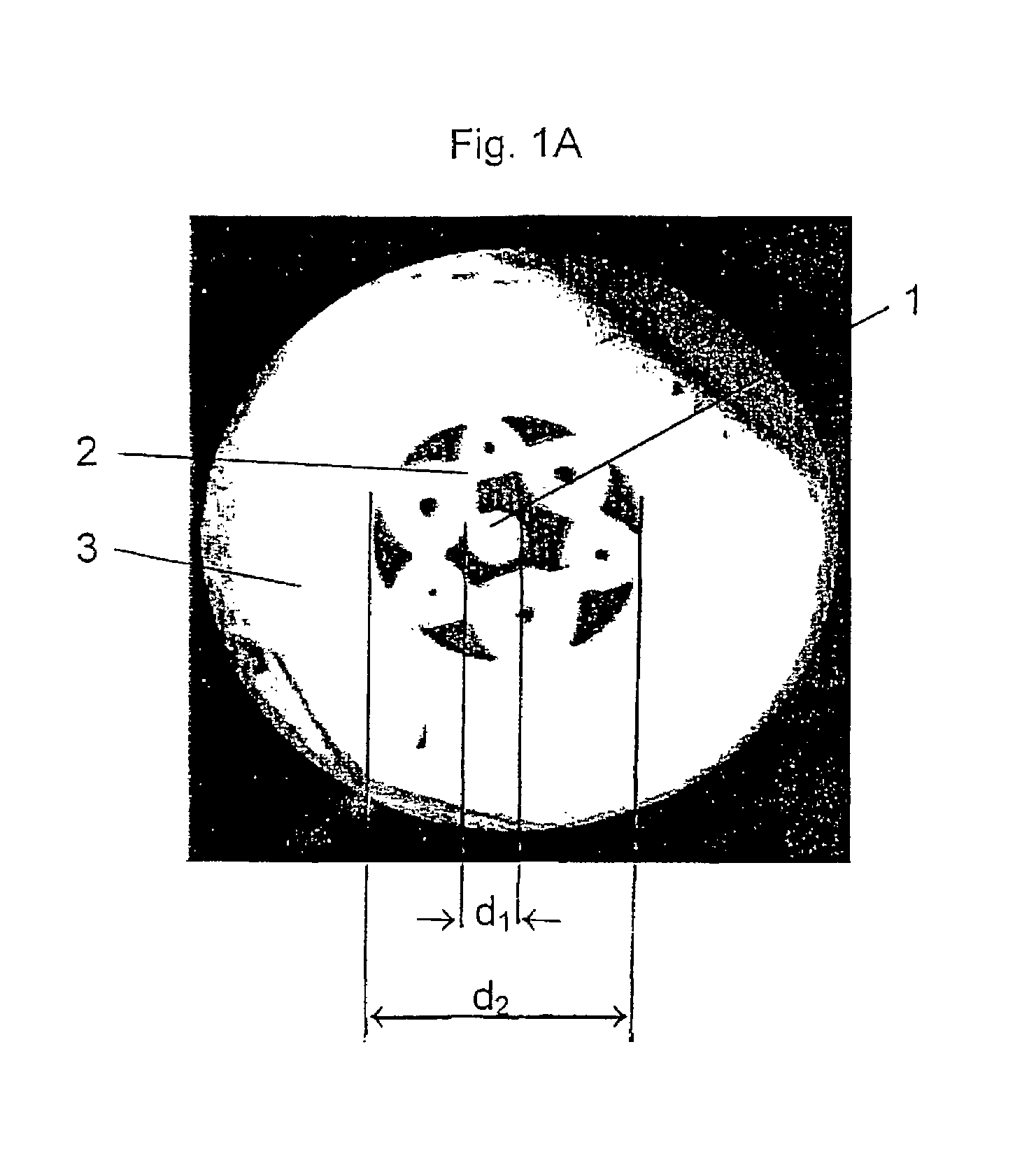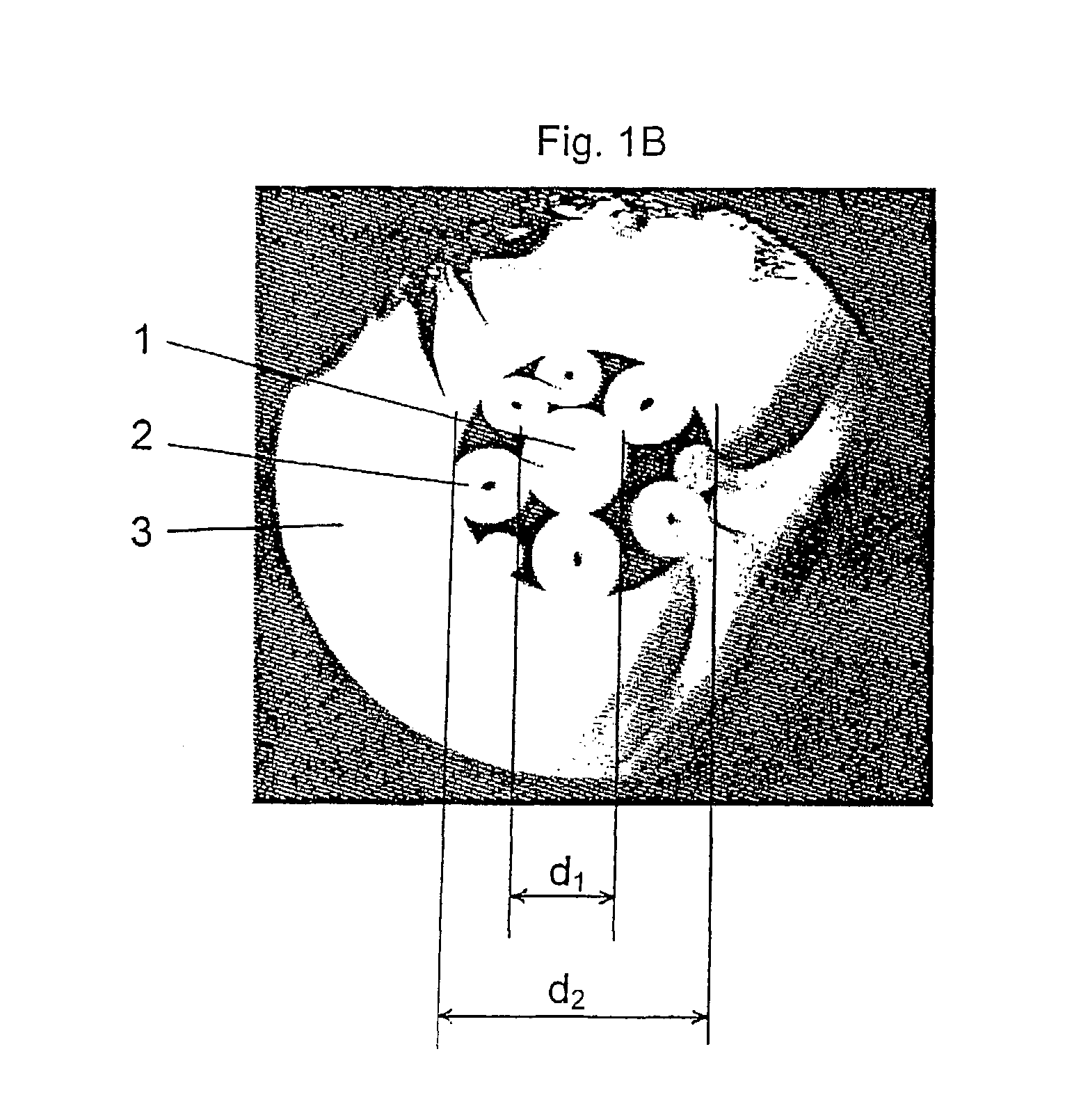Holey optical fibres of non-silica based glass
a non-silica-based glass and optical fibre technology, applied in the field of optical fibres, can solve the problems of adding a further level of complication to the fabrication process, and not true for compound glasses, and achieve the effect of keeping the potential for nucleation and crystallisation problems
- Summary
- Abstract
- Description
- Claims
- Application Information
AI Technical Summary
Benefits of technology
Problems solved by technology
Method used
Image
Examples
Embodiment Construction
I. Results
[0044]FIGS. 1A and 1B are photographs of the cross-sections of two different holey fibres fabricated from GLS glass.
[0045]In each case, the GLS holey fibre has a microstructured transverse refractive index profile defined by the holes (dark in the photographs) that run along the length of the fibre (perpendicular to the plane of the photographs).
[0046]In each of FIGS. 1A and 1B, the fibre comprises a solid core 1 of diameter d1 surrounded by a holey cladding 2 of diameter d2 formed from tubular glass structures. The fibre further comprises a solid jacket 3 surrounding the cladding. In each example, good structure retention was obtained after pulling the fibre using a specialised and custom designed, fibre drawing tower and a specially constructed GLS preform, which are described in detail further below.
II. Fabrication
[0047]The special procedures used for fabricating holey fibres in compound glass materials are now described. The compound glasses are initially formed by fol...
PUM
| Property | Measurement | Unit |
|---|---|---|
| Temperature | aaaaa | aaaaa |
| Length | aaaaa | aaaaa |
| Wavelength | aaaaa | aaaaa |
Abstract
Description
Claims
Application Information
 Login to View More
Login to View More - R&D
- Intellectual Property
- Life Sciences
- Materials
- Tech Scout
- Unparalleled Data Quality
- Higher Quality Content
- 60% Fewer Hallucinations
Browse by: Latest US Patents, China's latest patents, Technical Efficacy Thesaurus, Application Domain, Technology Topic, Popular Technical Reports.
© 2025 PatSnap. All rights reserved.Legal|Privacy policy|Modern Slavery Act Transparency Statement|Sitemap|About US| Contact US: help@patsnap.com



